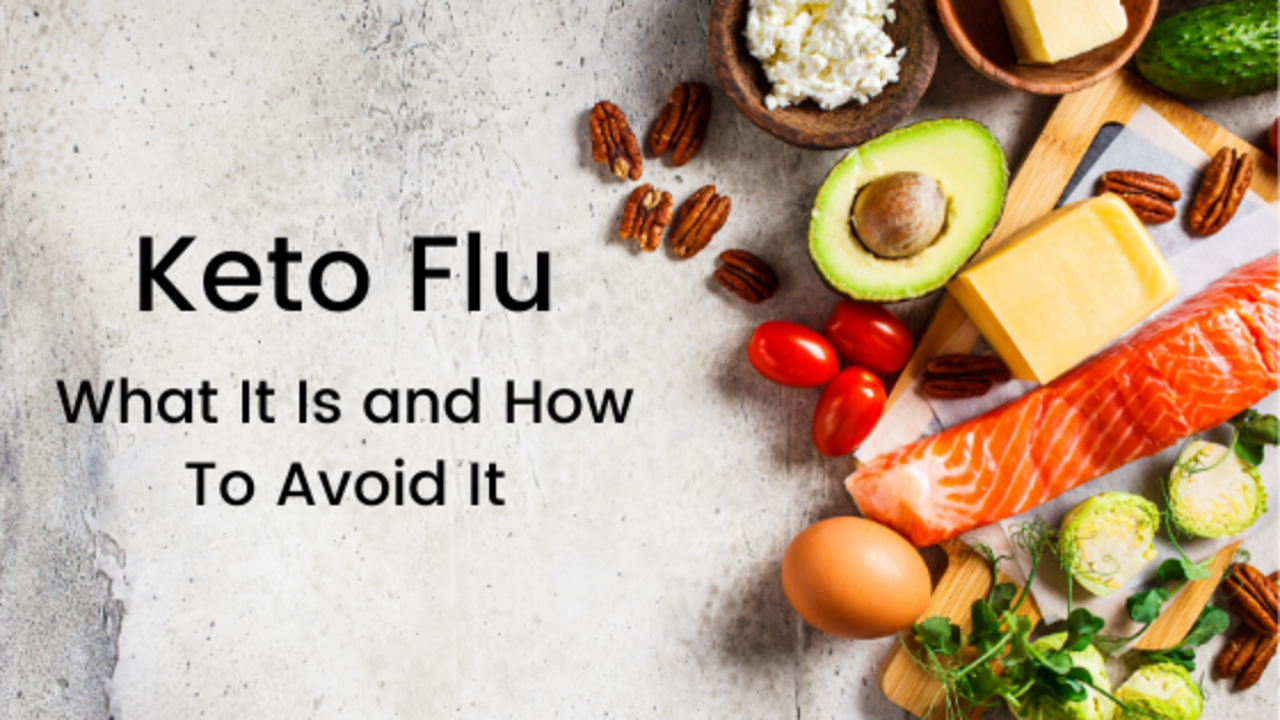
Keto Flu: What It Is & How To Avoid It
Jan 07, 2020When first transitioning to a ketogenic diet, it’s not uncommon to experience some initial side effects that come along with cutting carbs. These side effects are generally known as the “keto flu” and include symptoms like headaches, brain fog, irritability, nausea, dizziness, muscle cramps, heart palpitations, insomnia, diarrhea, fatigue, weakness, and possible carb cravings.
If you’re highly dependent on carbohydrates and processed foods for energy, you may experience worse symptoms than someone who is more accustomed to a paleo or lower carb way of eating. However, the main culprit of the keto flu usually comes down to an improper balance and deficiency of necessary electrolytes – primarily sodium, potassium, and magnesium.
When you reduce your carbohydrate intake, your body begins to excrete more water. This is because:
- Carbohydrates hold onto water in your body
- As your insulin levels drop, it triggers your kidneys to excrete more water as well. As water goes, it takes electrolytes with it.
How To Avoid The Keto Flu
Combatting the keto flu is actually pretty easy if you implement these guidelines and make sure to adequately replenish your water and electrolyte intake.
You should aim for the following daily amounts:
- Water: Consume at least half your body weight in ounces per day (more if you work out and sweat heavily).
- For example, if you weigh 150 pounds, you should consume at least 75 ounces (150/2 = 75) of water per day.
- In general, drinking at least 8, 8-ounce glasses of water a day is a good place to start.
- Sodium: Aim for 4-6 grams per day (about 2 – 2 ½ teaspoons of salt).
- Don't be afraid of salt (choose Real Salt and avoid table salt as it is stripped of many of its beneficial nutrients).
- Drinking bone broth or using it in your cooking is another great way to replenish electrolytes.
- Tip: Most store-bought bone broths are NOT made from real bones. Make your own or choose reputable sources like Kettle & Fire.
- Keep a Real Salt Pocket Shaker with you at all times! If you feel a headache coming on or light-headedness, add a dash of salt to your water. This is a great pre-workout trick as well!
- Potassium: Aim for 4-5 grams per day.
- Eat potassium-rich foods like avocados, salmon, spinach, mushrooms, asparagus, artichokes.
- Supplement options:
- Cream of Tartar: ½ teaspoon = 250 mg of potassium
- Potassium Chloride and Potassium Citrate are popular in several electrolyte powder drinks, brands like Lite Salt/NoSalt (sodium + potassium), or in pill form (usually 99 mg doses/twice daily is sufficient).
- Fun Fact: An avocado contains more potassium than a banana!
- Magnesium: Aim for 400 – 800 milligrams per day
- Eat magnesium-rich foods such as kale, spinach, pumpkin seeds, nuts, fish, avocados and dark chocolate (>90%, in moderation).
- Supplement with high quality, chelated magnesium. Some popular, absorbable forms include:
- Magnesium Glycinate – calming and may help with nerve pain.
- Magnesium L-Threonate – may help with brain cognition and function.
- Magnesium Citrate – may cause loose stools (used in Natural Calm brand drinks, could help with constipation).
- Magnesium Sulfate (also known as Epsom salt) – helps soothe muscles and support relaxation.
- Tips:
- Magnesium helps you relax and certain forms are best taken before bed.
- Avoid Magnesium Oxide – a non-absorbable form of magnesium and strong laxative.
My favorite way to ensure that I’m replenishing my electrolytes is by sipping on Ultima Replenisher or using Perfect Keto’s Electrolyte supplement.
Ready to join a group of strong, confident, badass women?
Don't miss a beat!
Get my weekly tips, exercises, recipes, and more fun stuff to your inbox every Friday.
Your information is safe.


